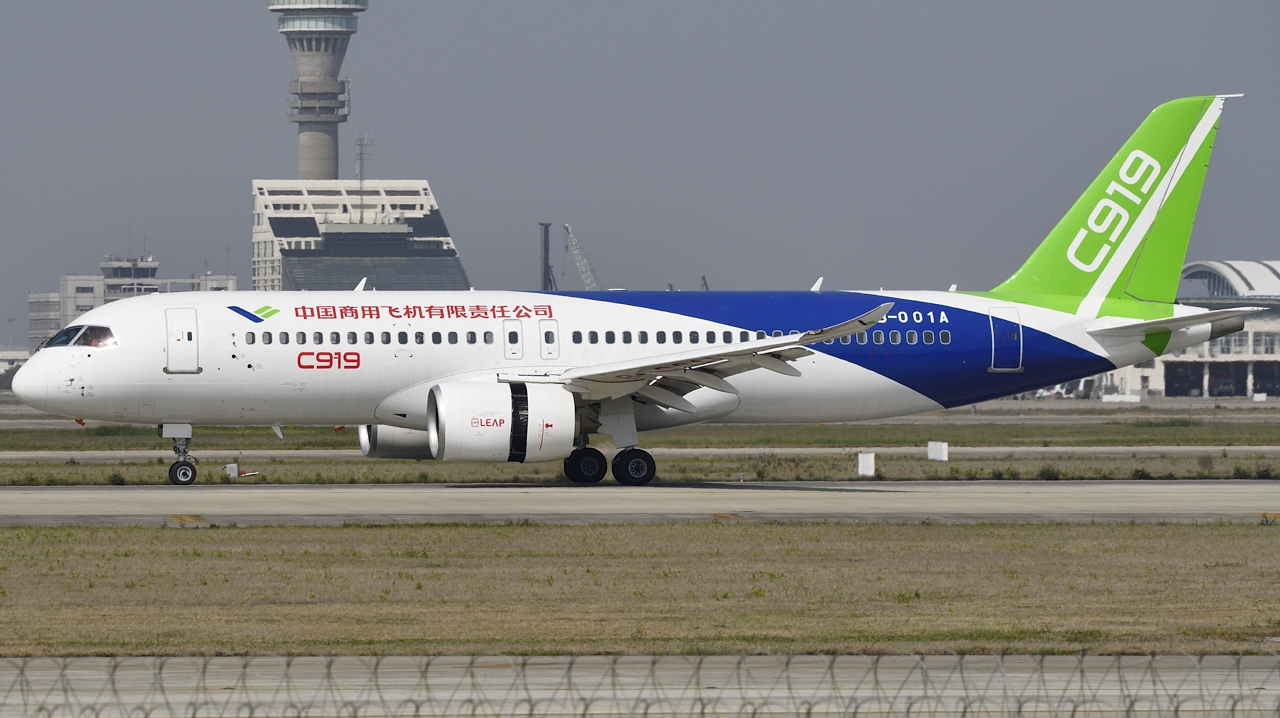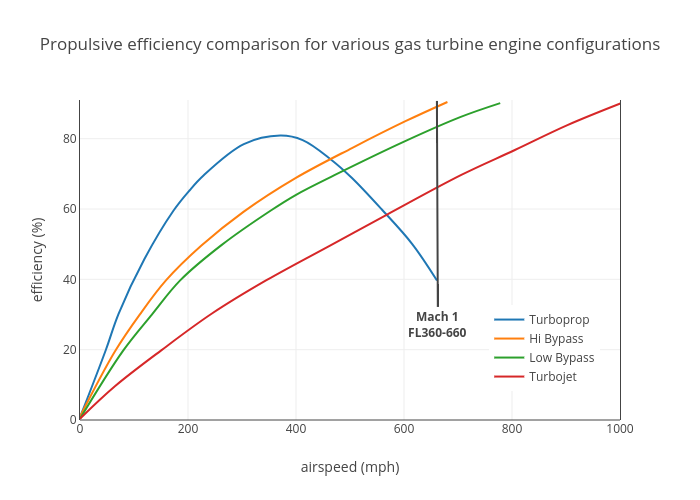|
CJ-1000A
The ACAE/AECC CJ-1000A () is a Chinese high-bypass turbofan engine currently under development by the Aero Engine Corporation of China (AECC), through its Commercial Aircraft Engines (ACAE) division in Shanghai. Design The CJ-1000A is being developed as the domestic powerplant for the Comac C919, a narrow-body aircraft, offering a thrust range of . The engine measures in diameter and in length, comparable to the diameter and length of the CFM LEAP-1C, the current engine for the C919. It features a two-spool design, similar to the LEAP-1C, with a single-stage fan, three-stage booster, ten-stage high-pressure compressor, two-stage high-pressure turbine, and six-stage low-pressure turbine (compared to seven stages on the LEAP-1C). The CJ-1000A is equipped with eighteen hollow titanium wide-chord fan blades and a single annular combustor uses 3D printed fuel nozzles. Development A model of the CJ-1000A was first displayed at the Aviation Industry Corporation of China (AVIC) ... [...More Info...] [...Related Items...] OR: [Wikipedia] [Google] [Baidu] |
Comac C919
The Comac C919 is a narrow-body airliner developed by Chinese aircraft manufacturer Comac. The development program was launched in 2008. Production began in December 2011, with the first prototype being rolled out on 2 November 2015; the maiden flight took place on 5 May 2017. On 29 September 2022 the C919 received its CAAC type certificate. The first production airframe was delivered to China Eastern Airlines on 9 December 2022 and was put into commercial passenger service on 28 May 2023. The aircraft, primarily constructed with aluminium alloys, is powered by CFM International LEAP turbofan engines and carries 156 to 168 passengers in a normal operating configuration up to 5,555 km (3000 nmi; ). In 2023, COMAC announced that it would develop both a shortened and a stretched version of the passenger jet – similar to the sub-variants offered for the competing Boeing 737 MAX and Airbus A320neo family. Naming In the model number, the ''C'' ... [...More Info...] [...Related Items...] OR: [Wikipedia] [Google] [Baidu] |
CFM International LEAP
The CFM International LEAP ("Leading Edge Aviation Propulsion") is a high-bypass turbofan engine produced by CFM International, a 50–50 joint venture between the American GE Aerospace and the French Safran Aircraft Engines. As the successor to the widely used CFM56, the LEAP competes directly with the Pratt & Whitney PW1000G to power narrow-body aircraft. Design The LEAP incorporates several design features intended to improve fuel efficiency and reduce emissions compared to the CFM56. Its architecture includes a scaled-down version of the low-pressure turbine used on the General Electric GEnx engine. The fan blades are made of composite materials via a resin transfer molding process and are designed to untwist under load to maintain aerodynamic efficiency. Although capable of operating at higher pressures than the CFM56, the LEAP engine is typically operated at lower pressures to improve durability and service life. It utilizes a higher proportion of composite material ... [...More Info...] [...Related Items...] OR: [Wikipedia] [Google] [Baidu] |
C929
The Comac C929 is a long-range 250-to-320-seat wide-body twinjet airliner being developed by China's state-owned aircraft manufacturer Comac as a competitor to the Airbus A330neo and Boeing 787 Dreamliner. The programme was previously developed by CRAIC (China-Russia Commercial Aircraft International Corporation), a joint venture between Comac and the Russian United Aircraft Corporation (UAC), as the CRAIC CR929. Following tensions between the partners and uncertainties linked to international sanctions on Russia, in 2023 Comac continued the programme independently of UAC. Development In June 2011, it was reported that Comac was studying the 290-seat C929 and 390-seat C939 wide-body aircraft. In June 2012, Russia and China entered talks to set up a joint venture between UAC and Comac to develop a successor to the Il-96. Development was expected to take at least seven years and at a cost of $7–12 billion, with a production target of several hundred aircraft. Russia would c ... [...More Info...] [...Related Items...] OR: [Wikipedia] [Google] [Baidu] |
Shenyang WS-20
The Shenyang WS-20 ( zh, c=涡扇-20, p=Wōshàn-20, l=turbofan-20) is a high- bypass turbofan aircraft engine designed by the Shenyang Aeroengine Research Institute for the PLAAF's Y-20 family of strategic airlifters, it is currently installed in limited numbers. It is based on the core of the low-bypass turbofan Shenyang WS-10A. The thrust range is . Testing with the Ilyushin Il-76 The Ilyushin Il-76 (; NATO reporting name: Candid) is a multi-purpose, fixed-wing, four-engine turbofan strategic airlifter designed by the Soviet Union's Ilyushin design bureau as a commercial freighter in 1967, to replace the Antonov An-1 ... began by 2013. Development continued in 2021. Images of Y-20 equipped with WS-20s emerged in 2022. The Y-20 and the WS-20 may have entered PLAAF service by March 2023. Photos showed Y-20 with the PLAAF roundels and colours at Kaifeng Air Base. Applications * Xi'an Y-20 See also * ACAE CJ-1000A * Shenyang WS-15 References {{AVIC aircraft ... [...More Info...] [...Related Items...] OR: [Wikipedia] [Google] [Baidu] |
Aviadvigatel PD-35
The Aviadvigatel PD-14 (previously known as PS-12) is a high-bypass turbofan that was developed by Aviadvigatel to power the Irkut MC-21, Yakovlev MC-21 twin-jet airliner. It is a 14 tf (30,865 lbf) thrust powerplant. Development In December 2009, the PD-14 was developed to be 15% more efficient than its PS-90A2 predecessor and to be installed on the Yakovlev MC-21, MC-21 and the Ilyushin Il-276. The PD-14 was announced in early 2010 with its development cost estimated at Russian ruble, RUB 35 billion (US$1.1 billion). In April 2010, Aviadvigatel was expecting to start its certification procedure in 2012. Its core was first tested on 26 November 2010. It was displayed for the first time at the 2013 Russian MAKS air show. Flight tests began in 2015 on an Ilyushin Il-76. Between December 2016 and May 2017, the PD-14 operational performance and working efficiency at all altitudes and speeds were assessed on the Il-76 testbed aircraft at Gromov Flight Research Institute near Mo ... [...More Info...] [...Related Items...] OR: [Wikipedia] [Google] [Baidu] |
High-bypass Turbofan
A turbofan or fanjet is a type of airbreathing jet engine that is widely used in aircraft propulsion. The word "turbofan" is a combination of references to the preceding generation engine technology of the turbojet and the additional fan stage. It consists of a gas turbine engine which achieves mechanical energy from combustion, and a ducted fan that uses the mechanical energy from the gas turbine to force air rearwards. Thus, whereas all the air taken in by a turbojet passes through the combustion chamber and turbines, in a turbofan some of that air bypasses these components. A turbofan thus can be thought of as a turbojet being used to drive a ducted fan, with both of these contributing to the thrust. The ratio of the mass-flow of air bypassing the engine core to the mass-flow of air passing through the core is referred to as the bypass ratio. The engine produces thrust through a combination of these two portions working together. Engines that use more jet thrust relative t ... [...More Info...] [...Related Items...] OR: [Wikipedia] [Google] [Baidu] |
Carbon Composite
Carbon fiber-reinforced polymers (American English), carbon-fibre-reinforced polymers (Commonwealth English), carbon-fiber-reinforced plastics, carbon-fiber reinforced-thermoplastic (CFRP, CRP, CFRTP), also known as carbon fiber, carbon composite, or just carbon, are extremely strong and light fiber-reinforced plastics that contain carbon fibers. CFRPs can be expensive to produce, but are commonly used wherever high strength-to-weight ratio and stiffness (rigidity) are required, such as aerospace, superstructures of ships, automotive, civil engineering, sports equipment, and an increasing number of consumer and technical applications. The binding polymer is often a thermoset resin such as epoxy, but other thermoset or thermoplastic polymers, such as polyester, vinyl ester, or nylon, are sometimes used. The properties of the final CFRP product can be affected by the type of additives introduced to the binding matrix (resin). The most common additive is silica, but other addi ... [...More Info...] [...Related Items...] OR: [Wikipedia] [Google] [Baidu] |
FlightGlobal
FlightGlobal is an online news and information website which covers the aviation and aerospace industries. The website was established in February 2006 as the website of ''Flight International'' magazine, ''Airline Business'', ''ACAS'', ''Air Transport Intelligence'' (ATI), ''The Flight Collection'' and other services and directories. FlightGlobal has a picture library of over 1 million images, starting with the foundation of ''Flight'' in 1909. Thousands of images and back copies of ''Flight'' were searchable online but from June 2020 they are only available with a paid subscription to Flight Global Premium. FlightGlobal won the prize for "Business Website of the Year" at the Association of Online Publishers' Digital Publishing Awards 2010. According to the contest judges, "The site uses the full spectrum of digital tools, with a special focus on engagement and effective use of social media in a B2B usiness-to-businessenvironment". In August 2019, FlightGlobal and its asso ... [...More Info...] [...Related Items...] OR: [Wikipedia] [Google] [Baidu] |
Thrust Specific Fuel Consumption
Thrust-specific fuel consumption (TSFC) is the fuel efficiency of an engine design with respect to thrust output. TSFC may also be thought of as fuel consumption (grams/second) per unit of thrust (newtons, or N), hence ''thrust-specific''. This figure is inversely proportional to specific impulse, which is the amount of thrust produced per unit fuel consumed. TSFC or SFC for thrust engines (e.g. turbojets, turbofans, ramjets, rockets, etc.) is the mass of fuel needed to provide the net thrust for a given period e.g. lb/(h·lbf) (pounds of fuel per hour-pound of thrust) or g/(s·kN) (grams of fuel per second-kilonewton). Mass of fuel is used, rather than volume (gallons or litres) for the fuel measure, since it is independent of temperature. Specific fuel consumption of air-breathing jet engines at their maximum efficiency is more or less proportional to exhaust speed. The fuel consumption ''per mile'' or ''per kilometre'' is a more appropriate comparison for aircraft that travel ... [...More Info...] [...Related Items...] OR: [Wikipedia] [Google] [Baidu] |
Bypass Ratio
The bypass ratio (BPR) of a turbofan engine is the ratio between the mass flow rate of the bypass stream to the mass flow rate entering the core. A 10:1 bypass ratio, for example, means that 10 kg of air passes through the bypass duct for every 1 kg of air passing through the core. Turbofan engines are usually described in terms of BPR, which together with engine pressure ratio, turbine inlet temperature and fan pressure ratio are important design parameters. In addition, BPR is quoted for turboprop and unducted fan installations because their high propulsive efficiency gives them the overall efficiency characteristics of very high bypass turbofans. This allows them to be shown together with turbofans on plots which show trends of reducing specific fuel consumption (SFC) with increasing BPR. BPR is also quoted for lift fan installations where the fan airflow is remote from the engine and doesn't physically touch the engine core. Bypass provides a lower fuel consumption ... [...More Info...] [...Related Items...] OR: [Wikipedia] [Google] [Baidu] |
Overall Pressure Ratio
In aeronautical engineering, overall pressure ratio, or overall compression ratio, is the amount of times the pressure increases due to ram compression and the work done by the compressor stages. The compressor pressure ratio is the ratio of the stagnation pressures at the front and rear of the compressor of a gas turbine. Overall pressure ratio in a high-bypass turbofan is a function of inlet pressure ratio and compressor pressure ratio: OPR = IPR \times CPR The terms ''compression ratio'' and ''pressure ratio'' are used interchangeably. Advantages of high overall pressure ratios As can be seen in the formula for maximum theoretical thermal efficiency in an ideal Brayton cycle engine, a high pressure ratio leads to higher thermal efficiency: \eta = 1-\left(\frac\right) where PR is the pressure ratio and gamma the heat capacity ratio of the fluid, 1.4 for air. Keep in mind that pressure ratio scales exponentially with the number of compressor stages. Imagine a gas turbin ... [...More Info...] [...Related Items...] OR: [Wikipedia] [Google] [Baidu] |






